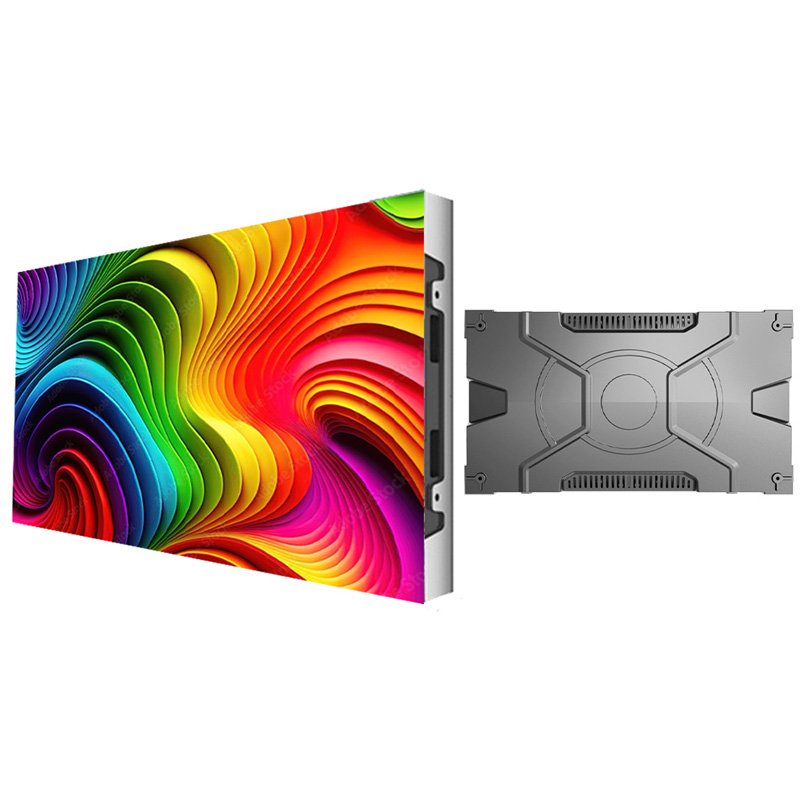For movie buffs, gamers, and content creators, nothing can be more important than using the right aspect ratio based on the type of platform they are using.
When it comes to the best and most versatile aspect ratios, 16:9 is undoubtedly the king! Considered to be a golden ratio in modern TVs and screens, 16:9 essentially highlights the width and height of the screen, with 16 being the width and 9 being the height.
1. What is the 16:9 Aspect Ratio?
While there are plenty of aspect ratios, such as 4:3 or 9:16, the 16:9 aspect ratio is a more versatile, deeply immersive, and high-performing aspect ratio, representing 16 units of width and 9 units of height.
From the perspective of screen resolution, 16:9 represents 1920 lines running vertically on the screen while comprising 1080 horizontal lines, which is where the term 1920x1080p comes from.
This aspect ratio was invented in the early 1980s and has since cemented itself as one of the most typically used aspect ratios, especially in modern widescreen HDTVs, digital screens, and more.
- History of the 16:9 Format
It is important to understand that the 16:9 aspect ratio stems from the gradual advancement in television screen technology. It has little to do with the equally advancing scope of movies and cinema productions.
But what is beautiful about the 16:9 aspect ratio and its rampant use since the 80s is its sheer versatility of accommodating various other aspect ratios. Since the 90s and the early 2000s, the 16:9 ratio was chosen as the optimal option for widescreen TVs, screens, and other types of displays.
The aspect ratio was an invention of Dr. Kerns H. Powers, who was an engineer and was part of the prestigious Society of Motion Picture and Television Engineers (SMPTE). It quickly gained significance and popularity due to its viewing performance, wider aspect, and visual prominence.
Powers was the one who initially presented the 16:9 aspect ratio to the SMPTE after having worked as a team to experiment with different types of aspect ratios and their applications in the entertainment industry.
Towards the dawn of the 90s, the aspect ratio was also adopted by the Action Plan of the European Union, making the 16:9 aspect ratio a prominent part of cinematography, filmmaking, and general television.
Then, towards the early 2000s, the aspect ratio was also rampantly used by the computer industry. Digital screens and other display units were made with a 16:9 ratio, forgoing the classic 4:3 aspect ratio.
- 16:9 Aspect Ratio Complete List Calculator
The formula for calculating the aspect ratio of any screen is to divide its width by its height. If the results equaled 1.778, it would mean that you have a display screen with a 16:9 aspect ratio.
Similarly, if you are not sure what the actual height of the screen is but know what its width is, you can divide the width by 1.778 to get a more precise reading on its actual aspect ratio.
In addition, it is likely that you know or have heard some common HD screen-related terminologies such as 720p HD, 2560p UHD, 1080p, etc. All these figures indicate that the screen has a 16:9 aspect ratio. For example, if you divide 2560 with 1440, you get 1.78.
2. 4:3 (SD) vs 16:9 (HD) Confrontation
The fundamental differentiating factor between the 4:3 and 16:9 aspect ratios is their height and width. What is unique about the 16:9 ratio is that it allows for a much wider and more immersive display compared to 4:3, which is more squarish and vertical than it is wide.
Looking at things on a percentage scale, the 16:9 aspect ratio has 78% more height than 4:3, which has a mere 33% of height. You can already guess how watching a movie, making a video, or playing a game in the 4:3 ratio will be like – not that optimal.
On the other hand, the 16:9 ratio can pack a tremendous amount of information, displaying it more horizontally for an in-depth experience, while the 4:3 aspect ratio offers more information vertically.
This alone is one of the main reasons why the 4:3 ratio is widely used to generate images or videos on smartphones or other smaller screens, while the 16:9 ratio is excellent for all types of videos and formats.

3. Why is Widescreen 16:9 So Popular?
As we mentioned earlier, the 16:9 aspect ratio was launched in the early 80s and cemented itself as a mainstream viewing standard across multiple display devices from the 90s and onwards.
However, it is still important to know why the 16:9 widescreen aspect ratio is so popular. Let’s look at some excellent reasons that you will also agree with:
- It Offers a Deeper and More Immersive Cinematic Experience
From a broader perspective, the 16:9 widescreen display, in a lot of ways, resembles the same vibe and in-depth feel when going to watch a movie in a cinema. Plus, people across the globe have become more used to viewing and making videos in this aspect ratio.
- The Demand for High-Definition and Ultra High-Definition Viewing
As display technologies continue to peak, it is apparent that the demand for crisper and more high-definition video elements will continue to stay in trend. What’s great about the 16:9 aspect ratio is that it can seamlessly accommodate various types of formats such as UHD, HD, and 4K formats.
- The Ability to Produce Beautiful and Captivating Video Content
In the world of social media marketing, video content rules. The 16:9 aspect ratio permits social media influencers and content creators to produce compelling videos in a more dazzling and captivating way, exploring different types of formats using the 16:9 ratio.

4. Modern TV, Live Streaming, and Film Aspect Ratios
For today’s content creators, gamers, and filmmakers, the 16:9 aspect ratio can be more than enough since it is also considered an international benchmark when it comes to television or screening formats. Plus, all major streaming platforms, social media platforms, and display products support the 16:9 aspect ratio.
In addition, many social media influencers also livestream using this golden ratio on platforms such as YouTube and Twitch.
5. How to Get 16:9 Format Video?
If you are a video content creator, a gamer, or someone who just enjoys an immersive movie show-watching experience, you would be happy to know that most HD or UHD TVs come with a default aspect ratio of 16:9.
However, when it comes to video production and editing, depending on what software you are using, you can easily change the format of the video by going into settings or properties.
- How to Switch Video to 16:9 Aspect Ratio?
The easiest way to switch to a 16:9 aspect ratio when making a video is to import your production in this format on the software you are using.
However, most built-in or third-party video editing tools and software also provide numerous adjustment tools that you can use to change the aspect ratio of your video or experiment with different ratios.
6. Compatibility with Other Aspect Ratios
One of the best things about the 16:9 aspect ratio is its compatibility with a range of other aspect ratios.
For example, when compared with 21:9, an aspect ratio that is typically utilized in gaming screens and monitors, if you use a 16:9 aspect ratio on a 21:9 display, you will be able to enjoy a deeply immersive experience. However, you may have to scale the content to get rid of any black bars.
16:9 can also be converted into 9:16, which is a popular aspect ratio used in vertical video content creation on social media platforms such as TikTok, YouTube, and Instagram.
9:16 is commonly used to make YouTube shorts, Instagram short videos, etc. You can convert a 16:9 video into 9:16 by incorporating a pillar box to shrink the total size of the video.

7. 16:9 Aspect Ratio and LED Video Panel
If you’re looking to get the ultimate video-making and viewing experience, you need to consider investing in a quality and high-performance LED video panel.
Having been a top manufacturer and distributor of high-quality LED display units for over 10, Ledsino provides a wide array of exceptional LED display panels and ultra-high-definition widescreens for both indoor and outdoor applications.
One of our top-rated and best-seller products includes the 600-XA Series, which is designed to provide a high pixel pitch rate of 1.25/1.53/1.67/1.83/1.86/2/2.5/3.076mm. Boasting a super-thin design, the display unit is easy to install and has excellent heat dissipation for maximum longevity.
With a high refresh rate, the 600-XA comes with a built-in magnetic maintenance panel and the display screen can be used for a variety of applications such as video conferences, gaming, widescreen indoor viewing, and much more.

- Front-end Convenient Maintenance
- Cabinet Size: 600*337.5mm/16:9
- Ratio Compatible with 300*168.75mm Module
- With 3 Years Warranty and 5% Spare Parts
8. Summing up the 16:9 Aspect Ratio
To sum it all up, it is important to understand that the 16:9 ratio is an evergreen format that is one of the most fantastic aspect ratios to create stunning video content thanks to its widescreen viewing and compatibility with other aspect ratios.



